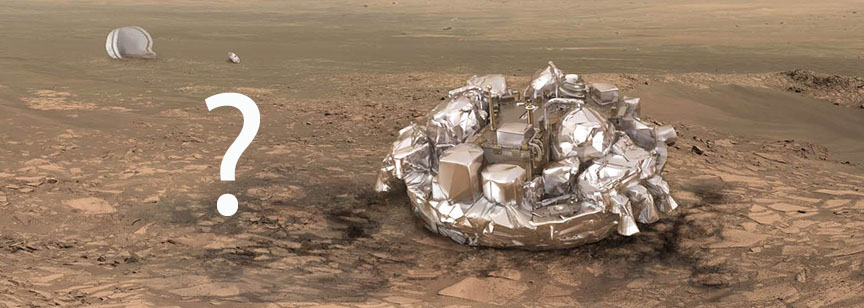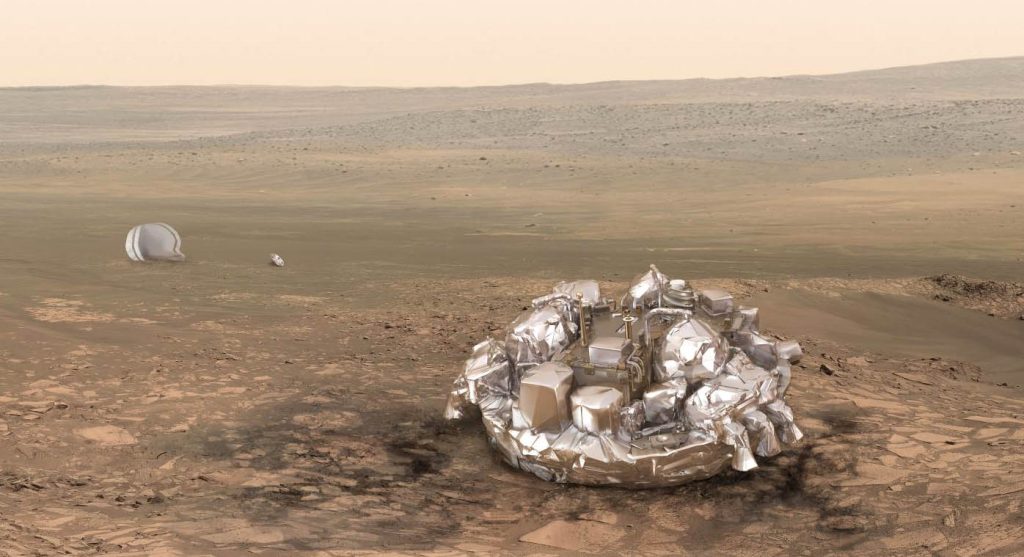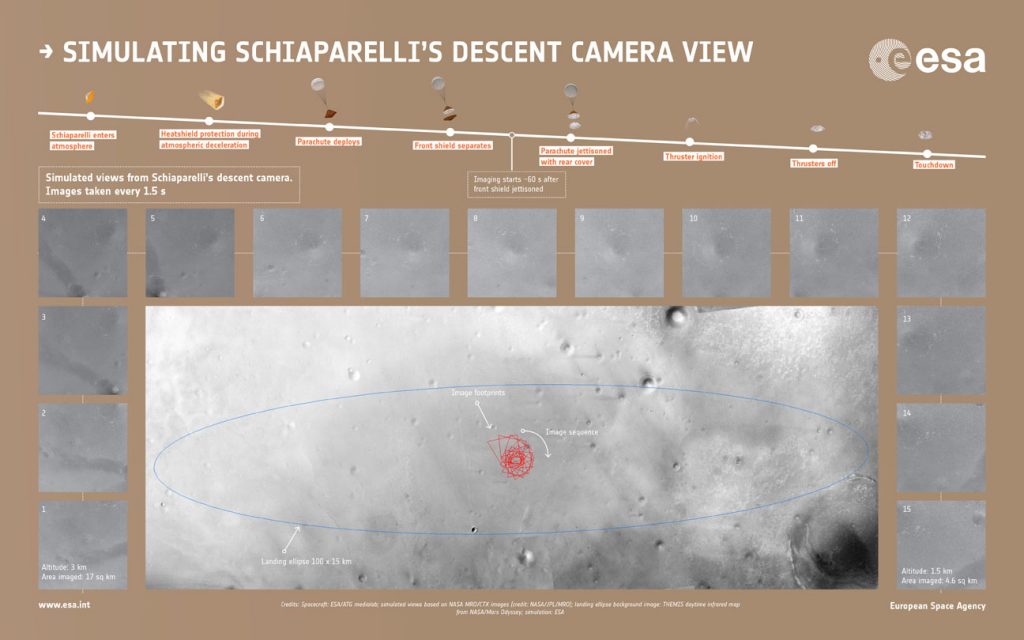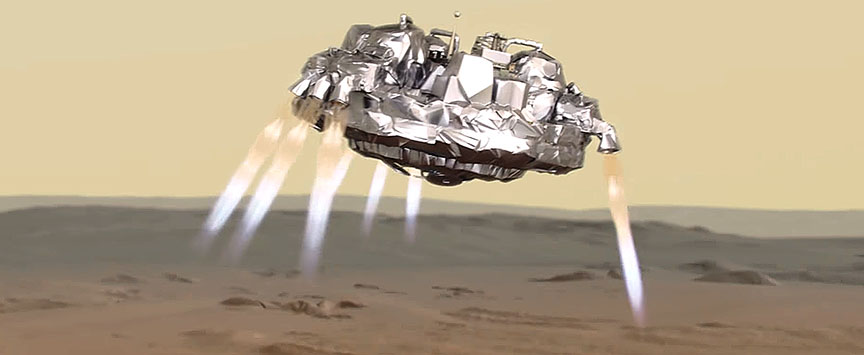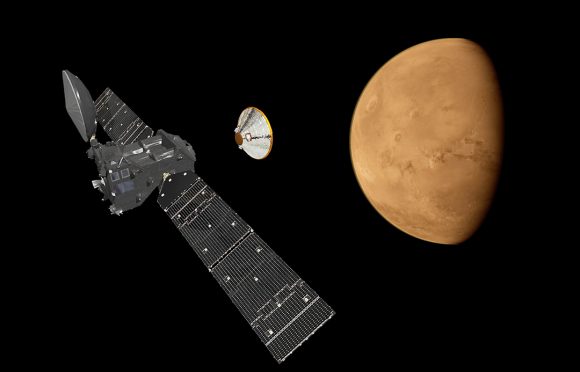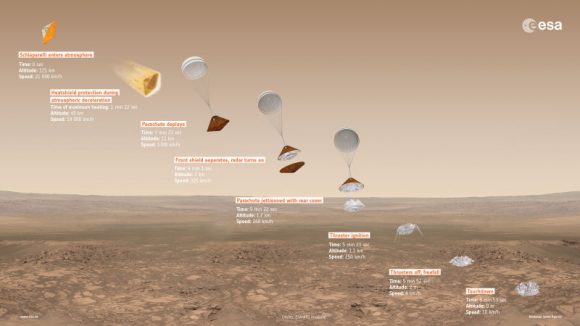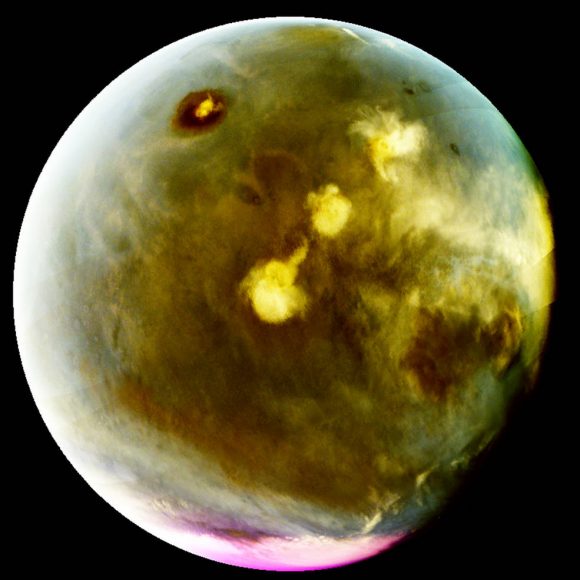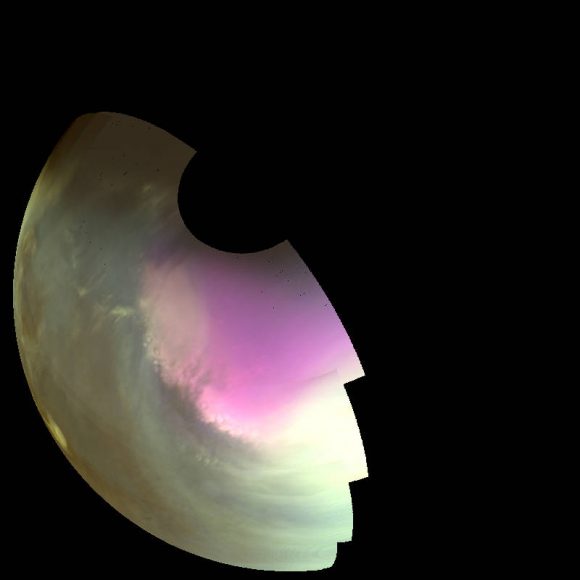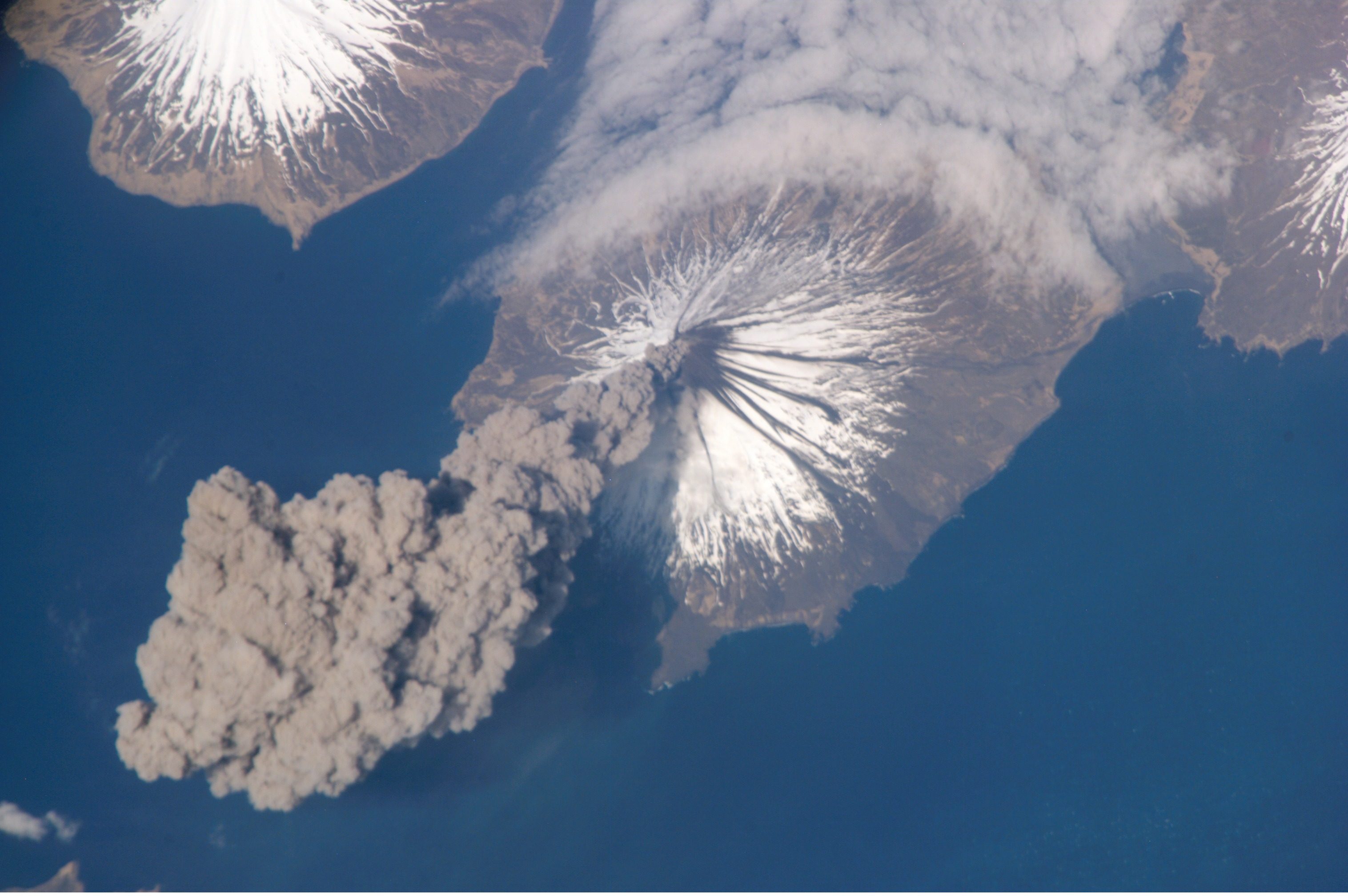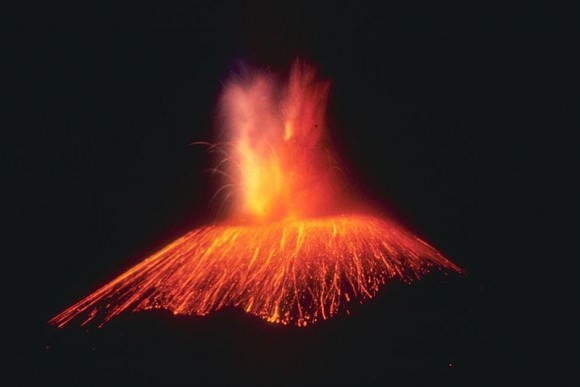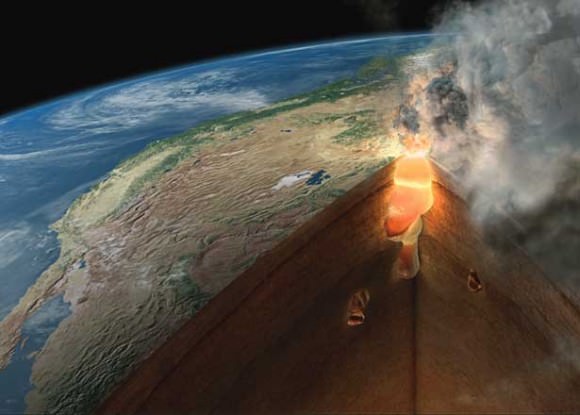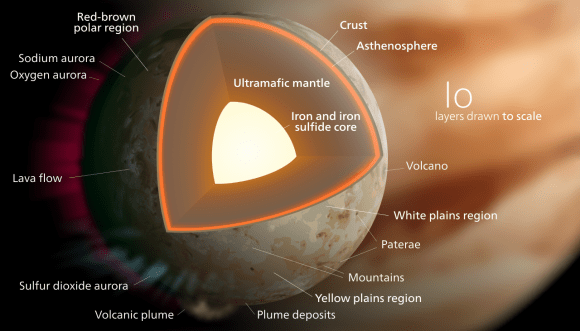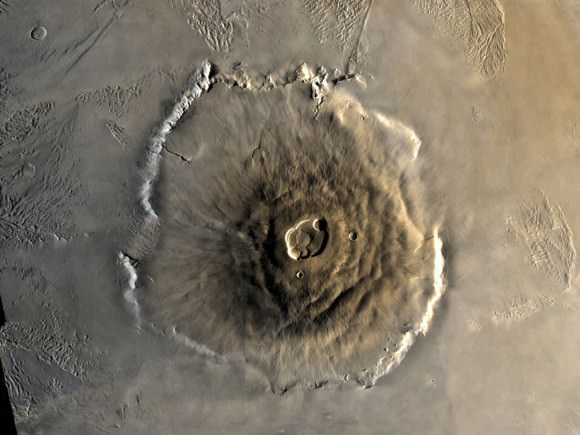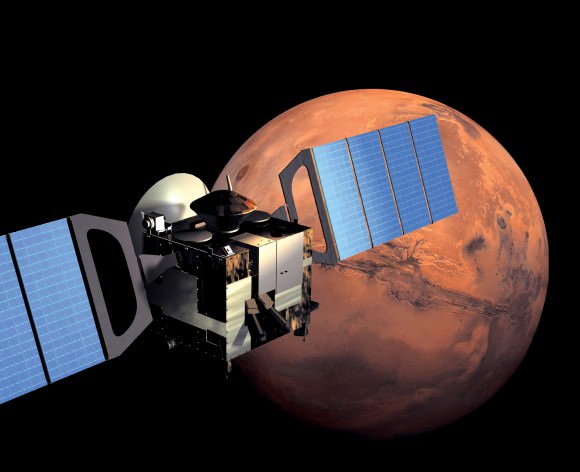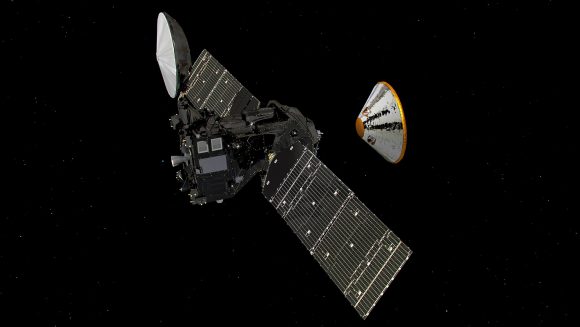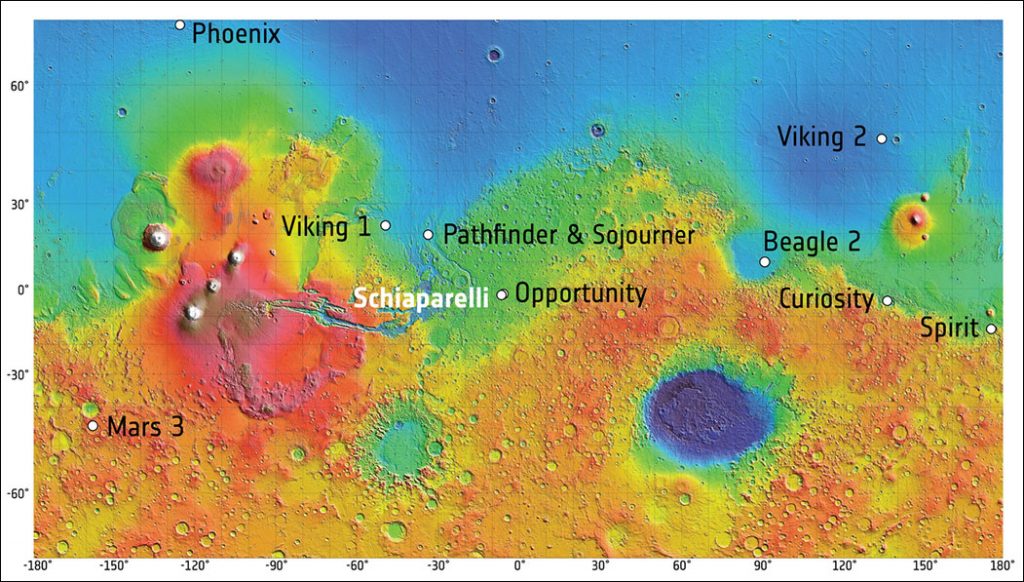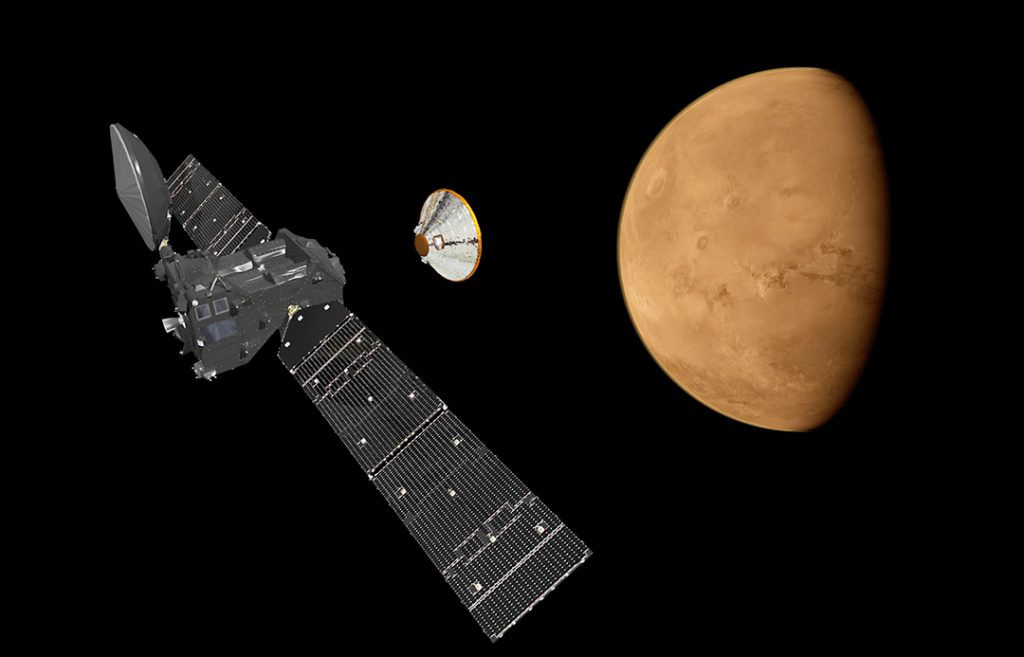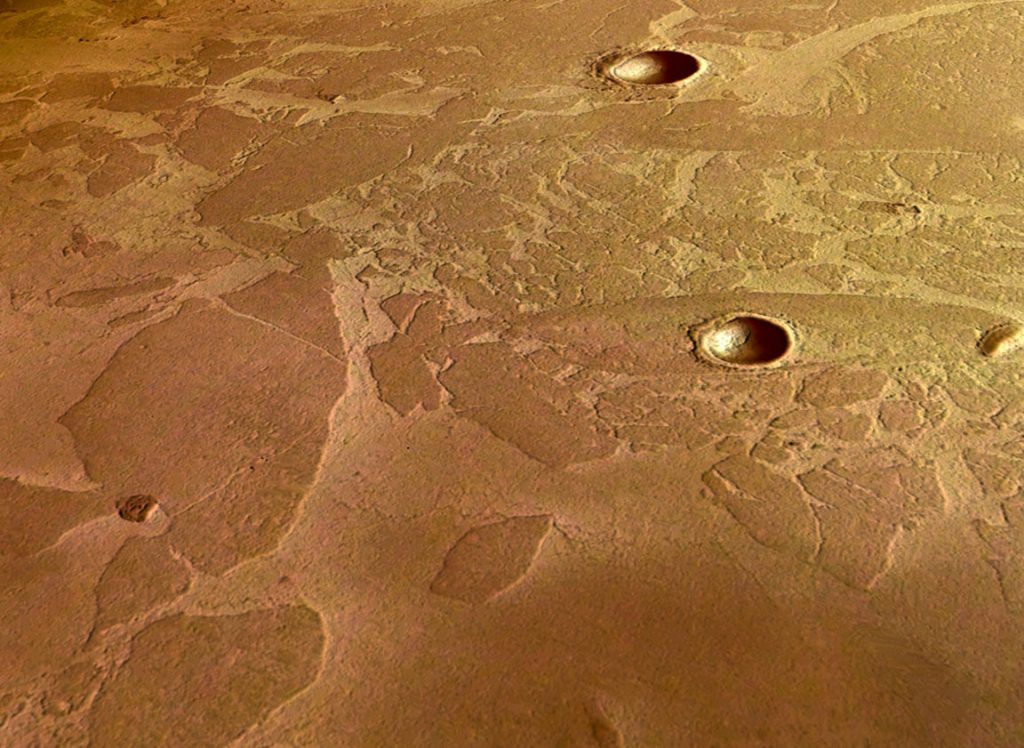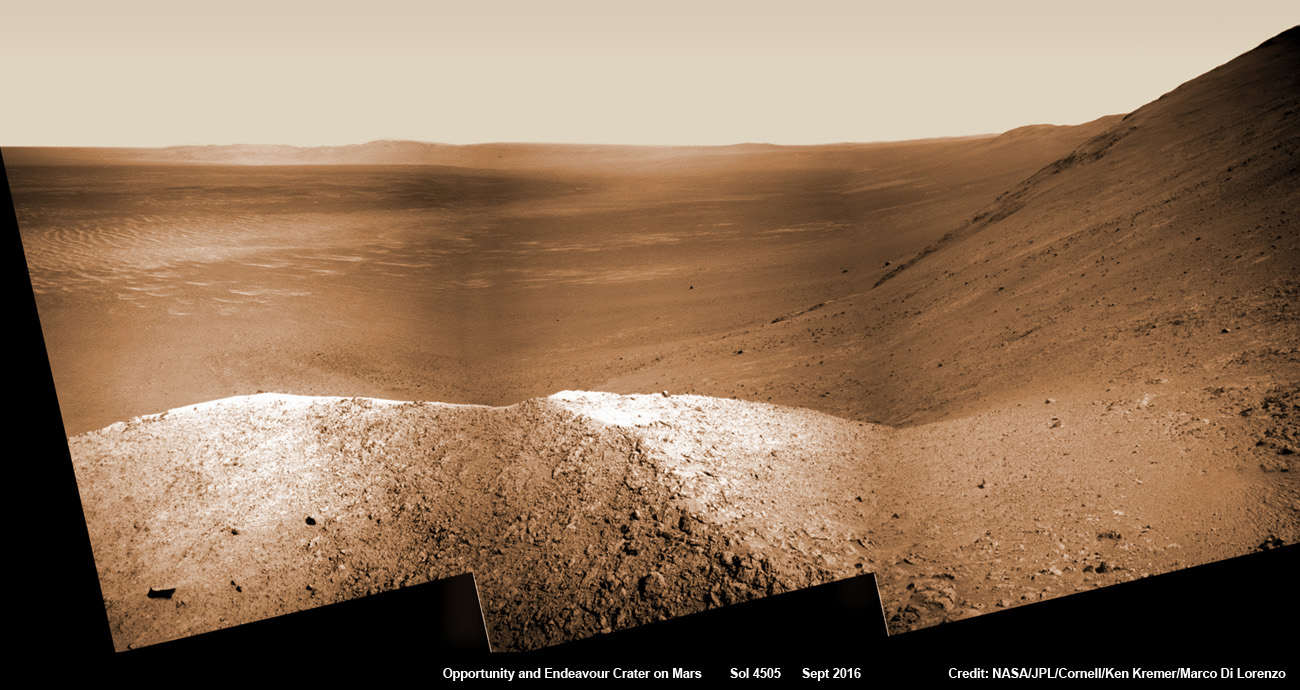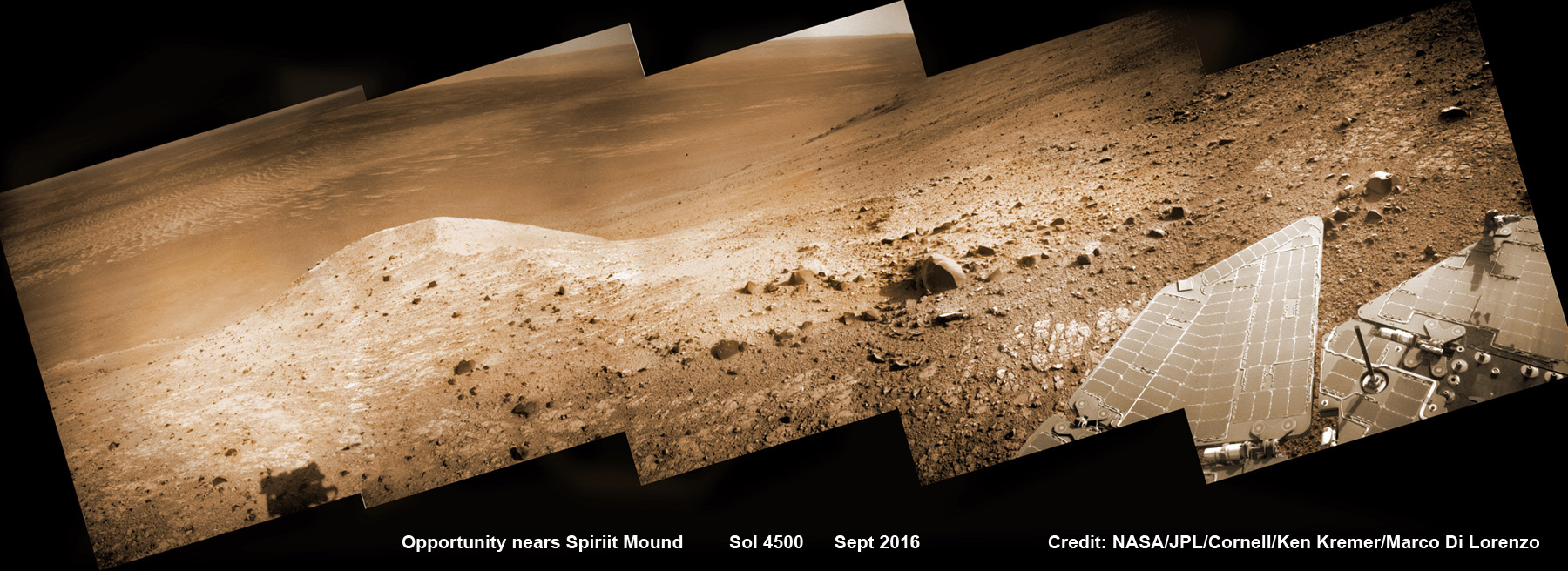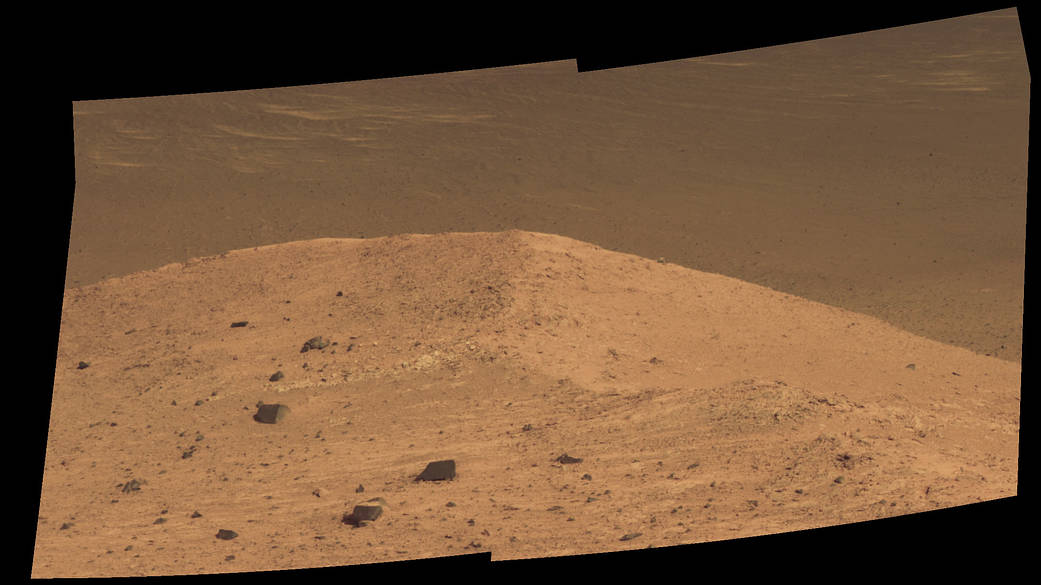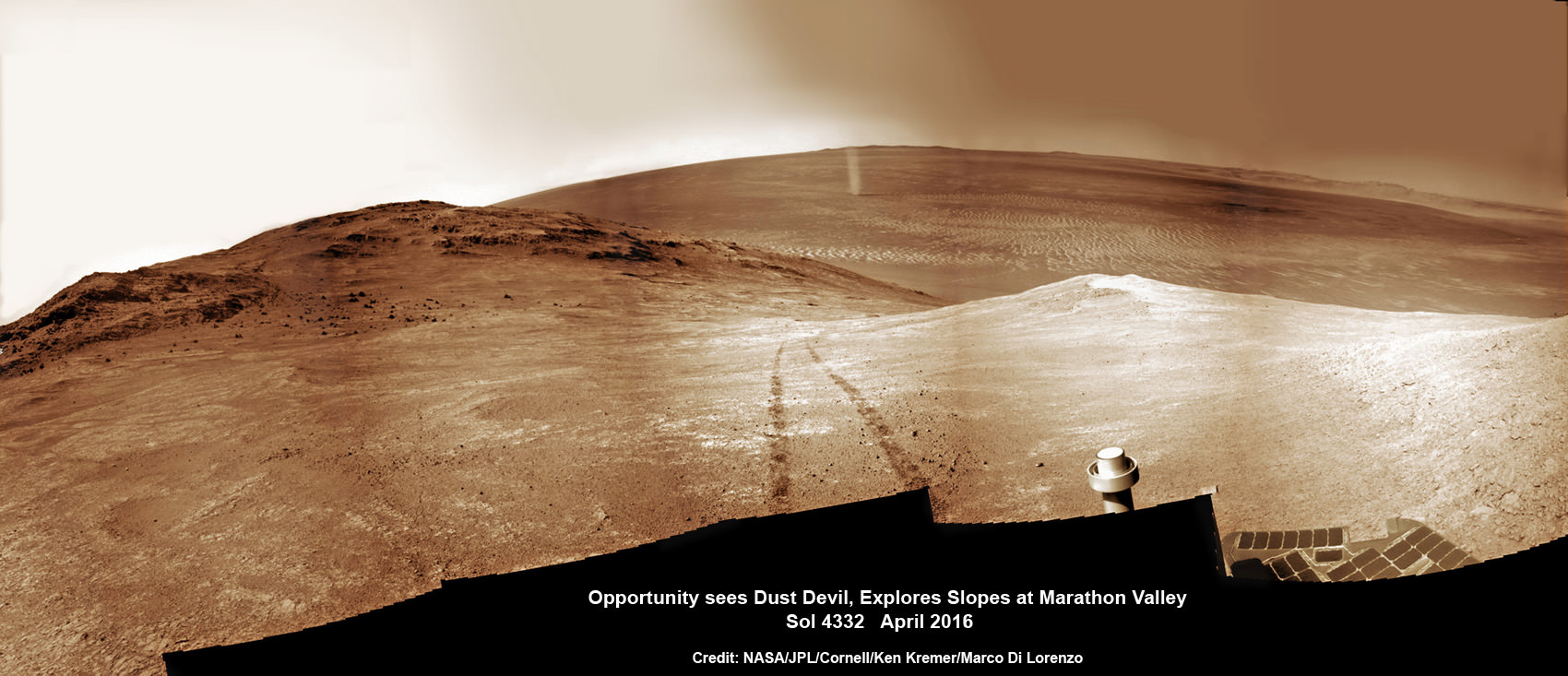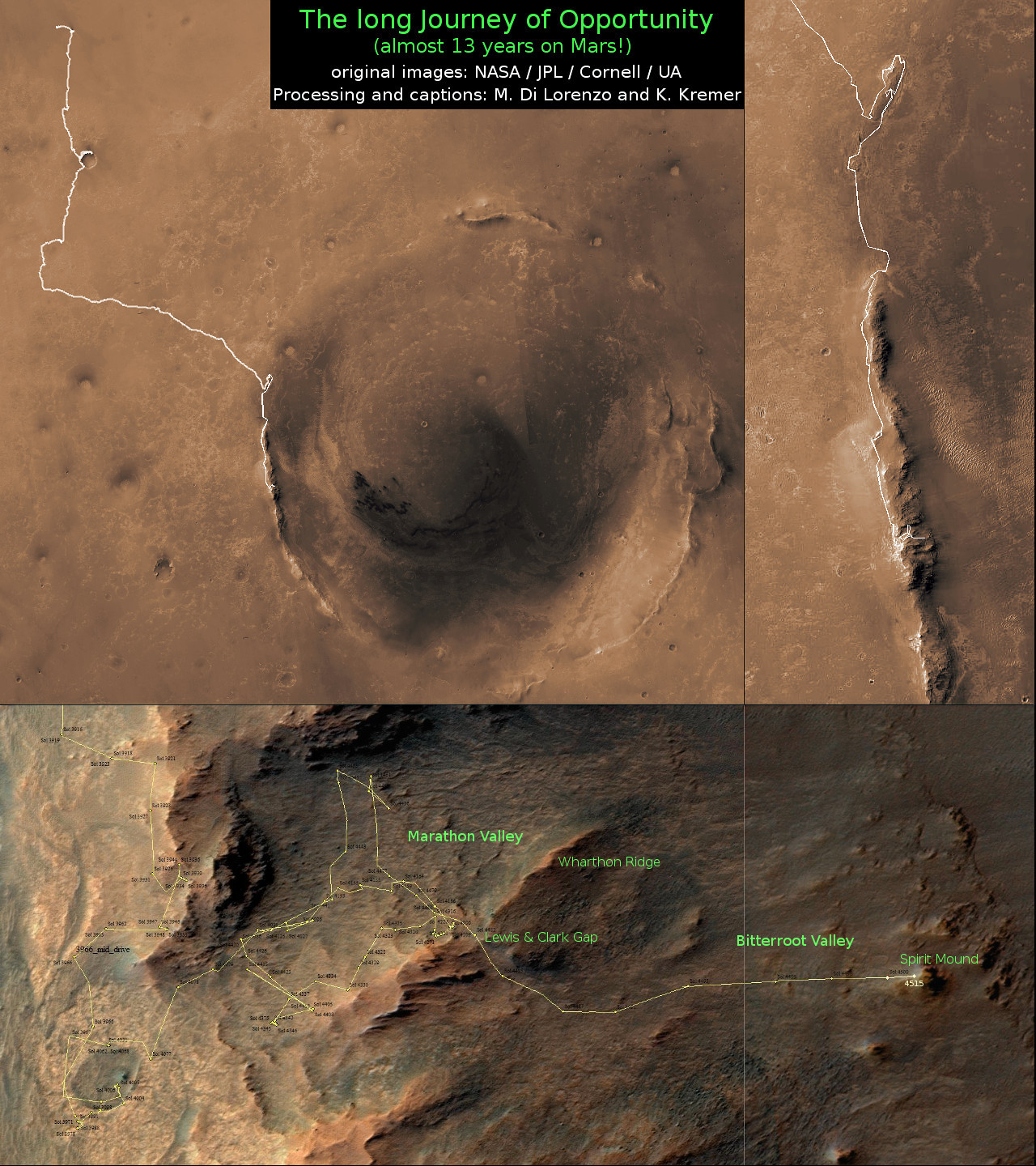Mars and Earth have several things in common. Like Earth, Mars is a terrestrial planet (i.e. composed of silicate rock and minerals). It also has polar ice caps, a tilted axis, and evidence of liquid water on its surface. On top of that, Mars and Earth are the only terrestrial planets in the Solar System to have natural satellites.
In fact, Mars has two satellites, which are appropriately named Phobos and Deimos (named after the Greek gods of horror and terror, respectively). Of the two, Deimos is the smaller moon and orbits at a greater distance from the planet. And like Deimos, it has the characteristics of an asteroid, which is a strong indication of where it may have come from.
Discovery and Naming:
Deimos was discovered in 1877 by American astronomer Asaph Hall, who was deliberately searching for Martian moons at the United States Naval Observatory (USNO). Its name was suggested shortly thereafter by Henry Madan, the Science Master of Eton College, and was derived from Homer’s The Iliad.

Size, Mass and Orbit:
Deimos has a mean radius of between 6 and 6.38 km (3.73 – 3.96 mi). However, the moon is not a round body, and measures roughly 15 × 12.2 × 11 km (9.32 x 7.58 x 6.835 mi), making it 0.56 times the size of Phobos. At 1.4762 × 1015 kg, or 1.4762 trillion metric tons, Deimos is 1/49,735,808 times as massive as the Moon. As a result, Deimos’ surface gravity is very weak, just 0.003 m/s – or 0.000306 g.
Deimos’ orbit is nearly circular, ranging from 23455.5 km at periapsis (closest) to 23470.9 km at apoapsis (farthest) – which works out to an average distance (semi-major axis) of 23,463.2 km. With an average orbital speed of 1.3513 km/s, it takes 30 hours, 18 minutes and 43.2 seconds to complete a single orbit (or 1.263 days).
Composition and Surface Features:
Deimos, like Phobos, is similar in composition to carbonaceous chondrite and silicate/carbon-rich (C- and D-type) asteroids. Though the surface is cratered, it is considerably smoother than Phobos’ surface, which is due to its craters being filled with regolith.
Only two geological features on Deimos have been given names – the craters of Voltaire and Swift. These features take their names from the famous 17th/18th century French and English writers who speculated about the existence of two Martian moons before they were even discovered.
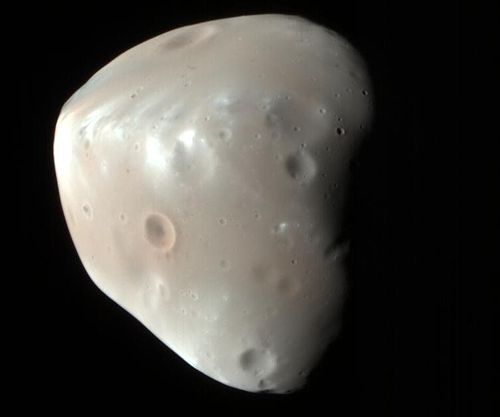
Origin:
The origin of Mars’ moons remains unknown, but some hypotheses exist. The most widely-accepted theory states that, based on their similarity to C- or D-type asteroids, they are objects that were kicked out of the Asteroid Belt by Jupiter’s gravity. They were then captured by Mars’ and fell into their current orbits due to atmospheric drag or tidal forces.
However, this theory remains controversial since Mars’ current atmosphere is too thin. As such, it is highly unlikely that it would have been able to cause enough drag to slow either moon down enough for them to have achieved their current orbits. A modified version of this hypothesis is that Phobos and Deimos were once a binary asteroid, which was then captured and separated by tidal forces.
Other popular hypotheses include that they were formed by accretion in their current orbits, or that Mars was once surrounded by many large asteroids which were ejected into orbit it after a collision with a planetesimal – like the one that formed Earth’s Moon. Over time, these would have fallen back to the surface until only Phobos and Deimos remained.
Exploration:
Overall, Deimos history of exploration is tied to that of Mars and Phobos. While no landings have been made on its surface, several have been proposed in the past. The first of these were made as part of the Soviet Phobos (Fobos) program, which involved two probes – Fobos 1 and 2 – that were launched in July of 1988.
If the first proved successful in landing on Phobos, the second would been diverted to make a landing on Deimos. However, the first probe was lost en route to Mars while the second managed to returned some data and images of Phobos surface before contact was lost.
In 1997-1998, NASA selected the proposed Aladdin mission as a finalist for its Discovery Program. The plan was to visit both Phobos and Deimos with sample return missions involving an orbiter and lander. After reaching the surface, the landers would collect samples and then launch them back to the orbiters (which would return them to Earth). However, the mission was passed over in favor of the MESSENGER probe, which was sent to study Mercury.
Other missions have been proposed with are still under study. These include the “Hall” concept proposed in 2008, which calls for a probe that relies on solar-electric propulsion (SEP) to reach Mars and return with samples to Earth. Another was the Gulliver mission, a concept proposed in 2010 which would attempt to retrieve 1 kg (2.2 lbs) of material from Deimos’ surface.
The planners behind the OSIRIS-REx mission have also proposed mounting a second mission that would return samples from Phobos and Deimos. And at the 2014 Lunar and Planetary Science Conference, a proposal was made for a low-cost mission based on the Lunar Atmosphere Dust and Environment Explorer. It is named the Phobos and Deimos & Mars Environment (PADME) mission, and would involve an orbiter being sent to Mars by 2021.
Deimos has been photographed from the surface of Mars by both the Opportunity and Curiosity rovers. And someday, actual astronauts may be able to look up at it from the Martian surface. From their point of view, Deimos would appear like a star to the unaided eye. At its brightest, it might look like Venus does from here on Earth.
For those watching over an extended period of time, Deimos would pass directly in front of the Sun quite regularly. It’s too small to cause a total eclipse, it would look like a black dot moving across the face of the Sun.
We have written many interesting articles about Mars’ moons here at Universe Today. Here’s How Many Moons Does Mars Have?, Phobos and Deimos – the Moons of Mars Explained, Phobos and Deimos Together at Last!, Moon Dance: Curiosity Rover Captures Movie of Phobos and Deimos Together and Opportunity sees Phobos and Deimos.
For more information, be sure to check out this Solar Views article on Deimos.
Astronomy Cast also has some relevant episodes on the subject – Episode 52: Mars, and Episode 91: The Search for Water on Mars.
Sources:


